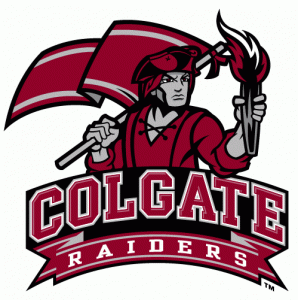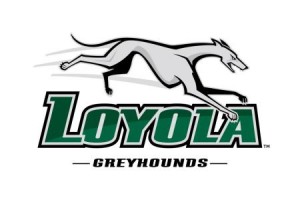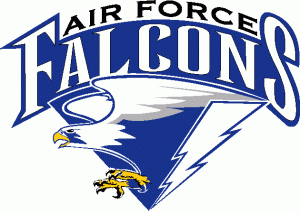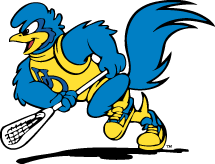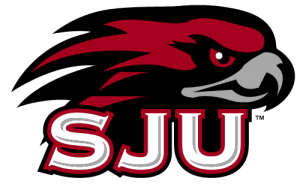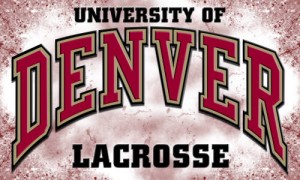I took a look at the Titans’ common opponents with Michigan a few days ago. Now, it’s Michigan’s turn to run down the rest of the docket. The final six here. Round one at this post.
Colgate
Michigan: March 17 (Flushing, N.Y.)
2012
14-4 (5-1 Patriot), #12 Laxpower, #13 Tempo-Free Lax
Colgate was a good team last year – very good, in fact. They tied for first in the Patriot League, and were the only team all season to knock off UMass (the country’s best team), doing so in the first round of the NCAA Tournament. Oh, by the way, they boast the reigning Tewaaraton winner on their roster.
The Past Results
Michigan has never played Colgate. In fact, neither has Detroit. Given how good Colgate was last year, I don’t think it would have gone well for either team, however.
The Forward-Thinking Look Back
| Colgate 2012 | |
|---|---|
| Pace | 72.61 (6) |
| Poss% | 50.80 (16) |
| Off. Eff. | 36.08 (6) |
| Def. Eff. | 27.79 (20) |
| Pyth% | 71.28 (13) |
Colgate was a pretty fun team to watch last year. In addition to the excitement of the country’s best player, Peter Baum, they played up-tempo on both sides of the ball, and were fast because they chose to be, not because they were bad (the reason Michigan was fast).
Offensively, Peter Baum had an amazing season last year, racking up 97 total points. That came on a jaw-dropping 67 goals (he’s one of only six players that put up that many points, much less goals). Second-leading scorer and fellow attackman Ryan Walsh was just a freshman last year, and he’ll be back. The attrition starts at No. 3, however, with midfielder Jeff Ledwick moving on. No. 4 Brendan McCann (the third attackman) is a junior this year, and the fifth-leader was midfielder Matt Baker, who also returns and is now a senior. So much of a very potent offense returns that it’s tough to predict anything other than pain for Colgate opponents. If Baum misses significant time due to injury, you could see a slide, but otherwise I’m not expecting it.
The defense is similarly stacked with returners. Although the team’s non-faceoff leader in ground balls, senior captain Kevin Gordon, is gone (he’s listed as a defenseman, but played LSM based on having zero starts last season), starters James Queeney, Kevin Boyle, and Bobby Lawrence are all back. Between them, they missed one start all season, and had a decent defensive efficiency despite playing a couple good offenses over the course of the year. Goalie Jared Madison is gone, but as long as there’s a competent body between the pipes, it’s not a huge concern.
In the possession game, Robert Grabher was above .500 on faceoffs, and also returns (insert standard “doesn’t necessarily carry year-to-year” thoughts here). The Raiders were a good ride/clear team as well, and with their returning talent, I would expect that to continue. This should be one hell of a team.
Loyola
Michigan: March 23 (Michigan Stadium)
2012
18-1 (7-0 ECAC), #2 LaxPower, #2 Tempo-Free Lax
So, uh, yeah. This is your defending national champion. No tall mountain to climb there. Although The Hounds lose some talent, they were the (second-) best in the country for a reason, and they have plenty of excellent players returning as well.
The Past Results
Shockingly, Michigan held their own against Loyola in Oosterbaan Fieldhouse last spring, only falling by a 15-8 count. Loyola was fairly dominant in time of possession (Michigan conceded faceoffs by playing defenseman JD Johnson at the dot – though Johnson still won a decent share by turning them into 50/50 balls), but didn’t blow out a team that many other opponents did.
Thomas Paras and Willie Steenland had two goals and an assist apiece for Michigan, and Alex Vasileff added two tallies of his own. Austin Swaney and J.D. Johnson led the team in GBs, and former goalie Emil Weiss went the distance in net.
Loyola’s Mike Sawyer had a decent offensive outing, notching five goals and two assists. Davis Butts and Eric Lusby, the team’s other offensive stars last year, had two and two each.
The Forward-Thinking Look Back
| Loyola 2012 | |
|---|---|
| Pace | 65.84 (32) |
| Poss% | 52.68 (8) |
| Off. Eff. | 35.50 (9) |
| Def. Eff. | 23.69 (5) |
| Pyth% | 83.01 (2) |
Hey, this team was pretty good at lacrosse. The only thing they were “bad” at was entertaining the most ADHD-stricken among their fans, playing at a leisurely pace despite plenty of talent on both sides of the ball. They dominated on offense, defense, and in the possession game, and that’s a pretty good recipe for ending up a national champion.
Eric Lusby is the biggest loss for this team. He led the team with 71 points, mostly through goal-scoring. Mike Sawyer will have to pick up some of that slack, as will fellow attackman Justin Ward. Midfielder Davis Butts is back, and he led the midfield in scoring last season. Sean O’Sullivan wasn’t too far behind him, but both of those players were back a bit: this is an attack-driven offense. With a new coordinator in town, that might change (David Metzbower replaces Dan Chemotti), and Butts kept pace with many of the attackmen in Loyola’s scrimmage against Team USA, so with the talent in place, the Hounds would be wise to use it.
On the defensive side of the field, D-middie Josh Hawkins gets a lot of the press because he’s exceptionally athletic and has sweet dreads. However, longpoles Reid Acton and Joe Fletcher are probably the more important pieces outside of transition opportunities (and expect Loyola to run a bit more with the new clock rules, if the USA scrimmage is any indication). Defenseman Dylan Grimm is the only loss from the close D, and goalie Jack Runkel also returns.
Faceoff specialist J.P. Dalton – who took damn near every draw for Loyola last season – is gone and will have to be replaced. It’s safe to assume a slight step back in that department, especially with almost no experience returning.
Air Force
Michigan: March 30 (Michigan Stadium)
2012
6-7 (1-5 ECAC), #35 Laxpower, #29 Tempo-Free Lax
Air Force didn’t have a great season, with their only ECAC win coming against Bellarmine (the shellacking of Michigan was a non-conference game in the Wolverines’ probationary year). They had some pieces in place, but the gauntlet of the ECAC schedule – Denver, Loyola, and Ohio State can go up against almost any conference’s top three, aside from maybe the ACC – did them in.
The Past Results
I alluded to it a moment ago, but the Wolverines truly got demolished by Air Force last year (not like I flew out to Denver to attend the game or anything…). U-M was on the wrong side of a 15-6 decision.
The Wolverines were actually the better possession team, but couldn’t put the ball in the back of the net themselves, while Air Force ran out to an absurd .536 offensive efficiency.
The Wolverines had only six goals and only two assists, so it wasn’t a banner day offensively. A really sloppy performance in terms of penalties was also huge. Air Force notched four EMO goals, including two of their first three – after Michigan had taken a 3-0 lead.
Dylan Westerhold did not have a spectacular day in net, but it’s hard to blame the goalie when he faced so many shots (he let in 15 on 24 faced). With Emil Weiss between the pipes, the story could have been very different.
The Forward-Thinking Look Back
| Air Force 2012 | |
|---|---|
| Pace | 71.69 (8) |
| Poss% | 48.50 (46) |
| Off. Eff. | 29.97 (30) |
| Def. Eff. | 27.46 (17) |
| Pyth% | 52.13 (29) |
I was surprised to see Air Force ranked as highly as they are according to Tempo-Free Lax, and I think part of the issue may simply be that Michigan game. It was one of Michigan’s worst games of the year, and easily Air Force’s best. Hacking it out of the numbers would take the Falcons well below their current rankings… but it still counts at the end of the day.
Three attackmen – all of whom return – led The Academy in scoring last year. Keith Dreyer was more a feeder than a goal-scorer, while both Mike Crampton and Holt native Tommy McKee were primarily finishers. Beyond that trio, there’s a dropoff to midfielders Erik Smith and Kyle Cassady (another attack-centric offense). The sixth- and seventh-leading scorers were more attackman in Ryland De Pol and Pat Harrison. Sophomore midfielder Tom Burgess rounds out last year’s double-digit point scorers. Every single one is back.
The defense isn’t quite so lucky. Starter Dayton Gilbreath has graduated along with SSDM Jon DeBonis, but D starters Matt Puleo and Davis Gunter are back, along with goalie Austin Fox. Another longpole, Kyle O’Brien, was a freshman last year and picked up plenty of ground balls – I think he was the LSM, but the AFA roster doesn’t differentiate.
Faceoff specialist Bryan Price, who won .512 of his draws last year, is also back. From a pure talent retention standpoint, this Air Force team should be greatly improved.
Delaware
Michigan: April 6 (Newark, Del.)
2012
6-9 (1-5 Colonial), #33 Laxpower, #30 Tempo-Free Lax
Delaware started last season pretty well, opening with two wins and then losses to a Loyola and Johns Hopkins team that ended up being pretty damn good. The wheels kind of fell off from there, with the only wins coming against expansion teams Michigan and Mercer, a pretty bad Saint Joseph’s team… and 8-7 Villanova. Weird year for the Blue Hens.
The Past Results
Delaware came in the latter part of Michigan’s schedule when the Wolverines started getting their stuff together. During that stretch, they managed to stay very competitive against some decent-to-mediocre teams, one of which Delaware was. The Blue Hens only won 11-7.
Michigan was right in the same neighborhood of Delaware from an efficiency standpoint, but a big deficit in possessions – the Wolverines won only 1/3 of faceoffs, and cleared less than 75% while allowing Delaware a near-perfect day – led to the clear loss.
Emil Weiss was the star with 17 saves, but also a goat with five turnovers in the clearing game. He faced 28 shots and practically stood on his head, so that sin can be mostly forgiven (Michigan wasn’t really in position to win anyway), but it’s certainly a “what could have been” situation.
Trevor Yealy and David McCormack were Michigan’s offensive stars, with three and two goals, respectively. Willie Steenland added two assists.
Detroit also played Delaware last year, getting crushed 19-6.
The Forward-Thinking Look Back
| Delaware 2012 | |
|---|---|
| Pace | 67.47 (21) |
| Poss% | 51.88 (12) |
| Off. Eff. | 28.90 (37) |
| Def. Eff. | 30.48 (32) |
| Pyth% | 51.69 (30) |
The numbers may be proving me wrong a bit here, but I think Delaware was pretty bad last year. The play of FOGO Dan Cooney kept things in reach, and although the Blue Hens were the more efficient team in each of their six wins, they were within the margin where another possession or two in either direction could have made a big difference. Huge wins over Detroit and Mercer also skew the numbers.
Unfortunately for Delaware, Cooney is gone, and that slim margin for error might be eliminated. His primary backup, Tyler Barbarich will likely take over at the dot, but expecting him to perform like Cooney (especially when he was under .430 himself last year) may be unfair.
Things don’t start so hot for the offense, either. Attackman Grant Kaleikau has graduated after accounting for as many points as the next three leading scorers combined. Those three players – midfielders Danny Keane and Nick Diachenko and attackman Mark Yetter – benefitted from a lot of Kaleikau assists, and his threat is gone. Keane and Diachenko return, but will have to hope for another creator/distributor if they want to stay productive. Senior midfielder Dom Sebastiani is the only returning player who has more assists than goal last year among regular rotation players.
A pair of freshmen split time in net last year, with redshirt Chris Herbert getting about 2/3 of the minutes and Brett Anton getting the remaining significant time. Anton actually put up significantly better numbers, but without knowing the situations each played in, it’s unfair to compare them (what I’m saying here is there’s probably a reason Herbert played more). As for defensive field players, senior Connor Fitzgerald will be a two-time captain this fall, but the guys who played alongside him are either gone (Jarred Bowe and Tim Langmaid) or only split time last year (James Connelly).
Saint Joseph’s
Michigan: April 20 (Michigan Stadium)
2012
6-9 (1-5 Colonial), #50 Laxpower, #48 Tempo-Free Lax
Saint Joseph’s smacked Michigan around in fall ball last year… then proceeded to be kinda bad during the course of the season. Their wins included Mercer, Wagner, VMI, and Quinnipiac, owners of nine wins between them (the Hawks also beat Marist and Towson, much better teams). This is a squad that has a lot of improving to do, but in the second year of a new coaching staff, may be able to do just that.
The Past Results
As mentioned previously, Michigan got killed by the Hawks in fall ball last year. It was Michigan’s first Division-1 action of any kind, so maybe a little expected, but to follow that up with the season Saint Joseph’s had… well I guess that explains how Michigan was a 1-13 squad last year.
The Forward-Thinking Look Back
| Saint Joseph’s 2012 | |
|---|---|
| Pace | 62.13 (48) |
| Poss% | 48.07 (50) |
| Off. Eff. | 23.26 (57) |
| Def. Eff. | 28.78 (24) |
| Pyth% | 28.92 (48) |
So, Saint Joseph’s was pretty bad last year. They played slowly, couldn’t control the ball, couldn’t score. The one thing they could do was prevent opponents from scoring (probably made for a lot of really boring games), but that wasn’t enough to nab them more than a few wins, even against a pretty weak schedule.
If you couldn’t score the ball at all last year, it might not be such a bad thing to lose some of your leading scorers. At least that’s what Saint Joseph’s will be hoping. Although the top two scorers (junior attack Ryan McGee and senior attack Kyle Williams) return, three of the other top seven guys are gone. McGee was a one-man show last year, scoring or assisting on more than half the Hawks’ goals. He might need to carry an even bigger load this year if the offense is going to improve at all.
The defense, on the other hand, was pretty good. Kevin Barrow, John Moran, and Will Farrell (different spelling, but, !!) return – though Moran and Farrell each only played art of the year – but the rest of the unit is hit hard by graduation. For being the lone bright spot last year, the defense may not hold up to its standards. Matt Germain, Colin Roemer, and goalie Griffin Ferrigan (who saved .572 of shots faced) are all out the door. Dustin Keen will likely step in between the pipes.
Denver
Michigan: April 27 (Denver, Colo.)
2012
9-7 (3-4 ECAC), #5 LaxPower, #8 Tempo-Free Lax
Denver has been a hot program in recent years, reaching the NCAA Tournament each of the last three year, and making it to the semifinals in 2011. The Pioneers’ resurgence has been built on the coaching of longtime Princeton headman Bill Tierney. Although DU’s record last year wasn’t stellar, the losses were to tough teams: Ohio State, Loyola (thrice), and Notre Dame were among the seven losses.
The Past Results
Michigan traveled out to Denver to take on the Pioneers last year – they’ll do the same in 2013 – and came out with a 17-5 beatdown. That was no surprise given the talent and experience difference between the two programs.
The Wolverines couldn’t win a faceoff, cleared poorly, and couldn’t take advantage of the limited possessions they had (while allowing Denver to take advantage of their own time after time). Dylan Westerhold was the man between the pipes, and his inexperience showed.
Doug Bryant scored two goals for Michigan, while Thomas Paras, Alex Vasileff, and Jeff Chu each scored one. Michigan mustered only seven shots on goal, so scoring on five of them (none assisted) was actually pretty impressive. Maybe the goalie was just surprised when they got one off.
The Forward-Thinking Look Back
| Denver 2012 | |
|---|---|
| Pace | 62.00 (49) |
| Poss% | 52.82 (7) |
| Off. Eff. | 38.77 (2) |
| Def. Eff. | 30.40 (31) |
| Pyth% | 75.12 (8) |
It should come as no surprise that Denver was a reallllly slow team last year – it’s a Tierney tradition. Despite the slow pace of play, they fielded a very good possession percentage and offense – it might have behooved them to speed things along a little.
About that offense: its most important piece, Canadian attackman and all-around badass Mark Matthews is gone. So is No. 2 scorer Alex Demopoulos, a fellow attackman. Midfielder Jeremy Noble was only one point behind Demopoulos (46) last year, so he should step into a bigger role. Still, losing your top two scorers isn’t the preferred way to enter a season. Attack Eric Law is also back, as is midfielder Wes Berg. The pieces are in place to have another great offense, but reaching No. 2 nationally with the talent the Pioneers are replacing will be tough. Expect midfielder/FOGO Chase Carraro to possibly play a bigger role in the scoring unit, especially when he can create fast breaks.
Defensively, Denver was very young, and should improve with experience. Goalies Jamie Faus and Ryan LaPlante both return, with Faus coming off injury – but potentially losing his job to All-Freshman team member LaPlante. On D, Carson Cannon, Matt Kramer, Drew Babb, and Kyle Hercher all return. Expect immediate improvement from the defense.
I touched on Chase Carraro in the offense section, but it’s important to note that he’s also one of the country’s best faceoff specialists. He won .604 of his draws last season, a big part of the Pioneers’ huge possession advantage (they were mediocre on the clear, and not a heavy-riding team, to say the least).
That’s all, folks. Pre-season opponent previews are complete.

